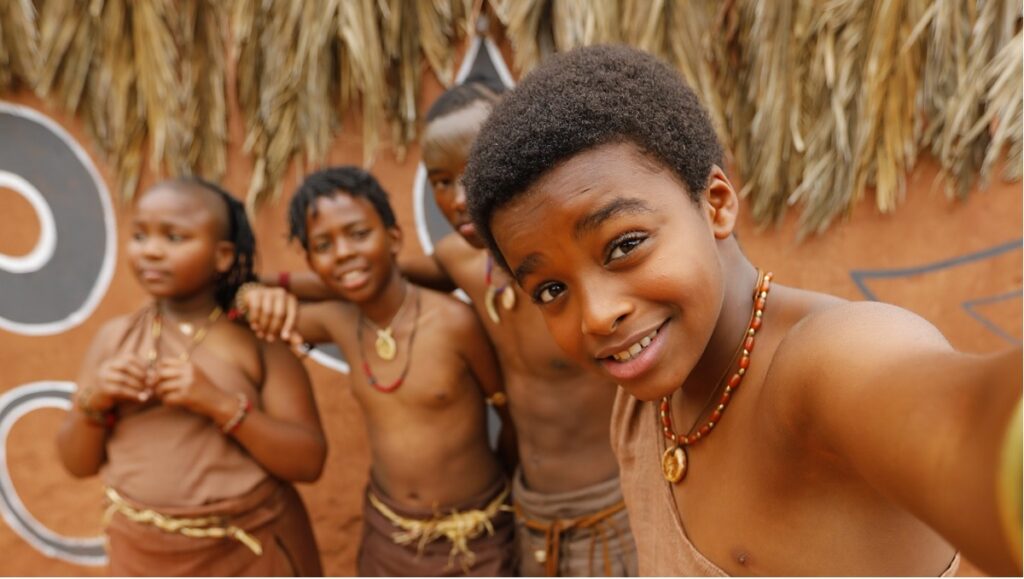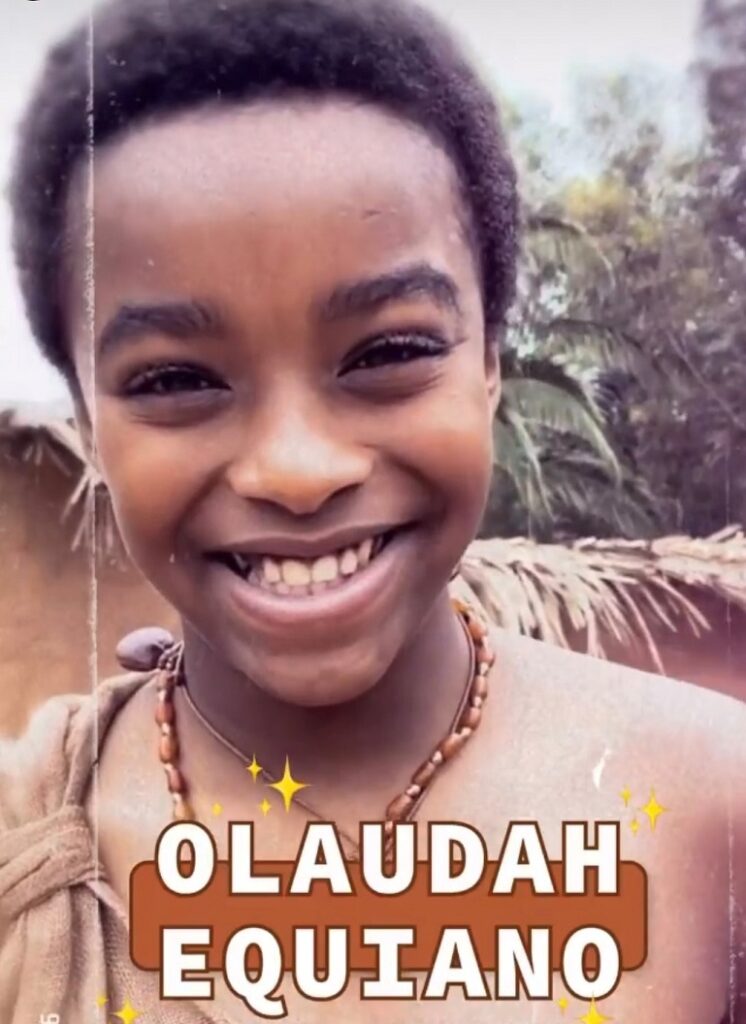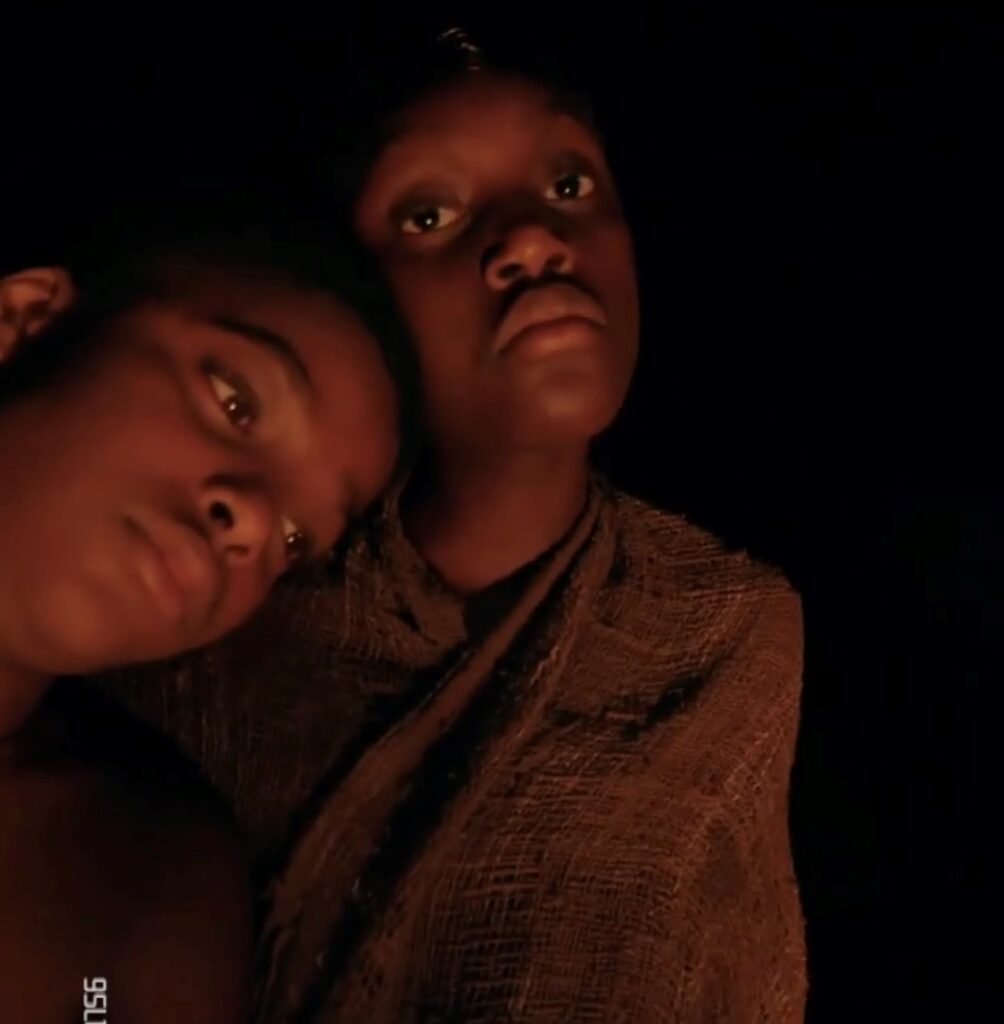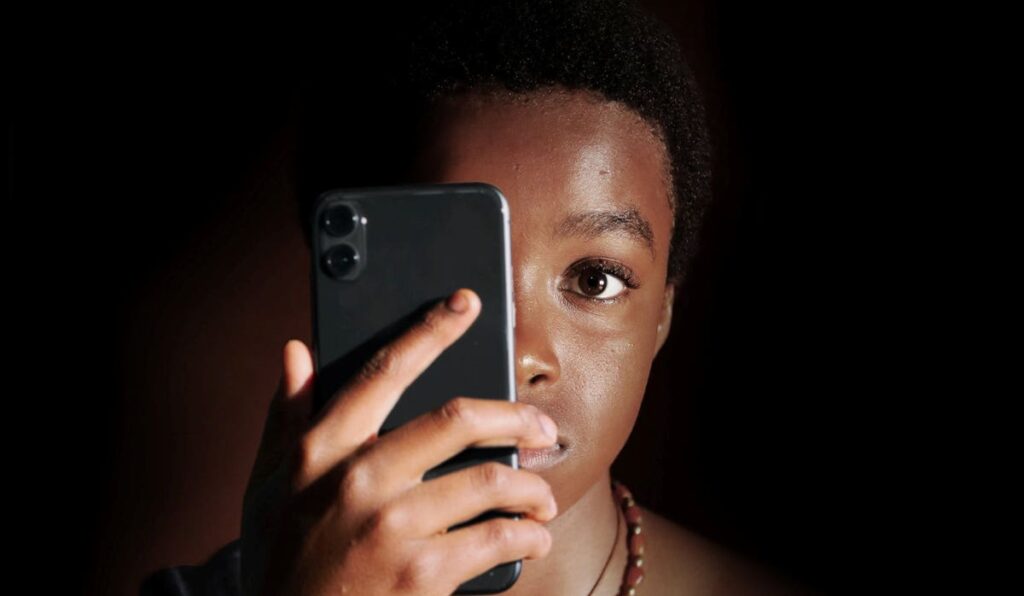Olaudah Equiano is a bright, carefree, charismatic, and loving young boy. He jokes around with his sister, gets hugs from his mom, and surrounds himself in his African culture. He respects his elders and listens to stories from Dibia, the village’s spiritual guide. He welcomes friendly visitors to his African village, and he’s taught to fight his enemies with weapons taken from his natural surroundings.
But he’s also just 11-years old when he is kidnapped and sold into slavery in West Africa in 1756, encountering a harrowing experience aboard a slave ship and later sold to a British Navy Officer. Equiano is one of the hundreds of Africans captured by slave traders and transported to new owners and new locations from a European slave ship.

Equiano’s story unfolds in bite-size Instagram stories – about 400 in total – giving viewers the opportunity to watch an 80-minute series of engaging and often traumatic life events recounted by a pre-teen in Africa as if smartphones and social media in daily life back then, as they do today. It’s a similar technique to the one used to filmmakers to tell the story of Eva Heyman, the 13-year old girl in 1944 Hungary. In this series, Eva.Stories, by the same creators, she uses her Instagram stories to give viewers the chance to witness the devastating events of the Holocaust, from antisemitism and discrimination of the Jews to the transferring of Jewish people to ghettos and death camps. Eva’s 220 Instagram stories are based on her diary and chronicles true events prior to and after her deportation during the Nazi invasion of Hungary in World War II.
Eva’s stories used modern methods and distribution platforms to retell history. The stories were put together by Maya Kochavi, who teamed up with her father, tech entrepreneur Mati Kochavi, to create the Instagram account in 2019, dramatizing the true story of this Holocaust victim, using actors and true-to-life settings. The pair put together an internal research team that included historians, philosophers, and social media experts and combined it with content from libraries and archives to provide a unique storytelling perspective that would connect to today’s youth. Eva.Stories, published on Israel’s Holocaust Martyrs’ and Heroes’ Remembrance Day on April 31, 2019, broke one million followers within 24 hours and received 1.2 million followers and 300 views in 48 hours.
“These young people had a pen and paper to tell their stories. We give them a phone, social media, and other technologies to allow them to communicate directly with their 21st-century peers,” says Maya Kochavi.

Maya came together with her sister Adi, one of the creators of Showtime’s two-season Dark Net series and former editor-in-chief of US media and tech firm Vocativ, to form the film studio Stelo Stories. Founded in 2020, Stelo Stories aims to be a leading brand for Gen Z and millennials, ages 14 to 35, through new genres of storytelling involving innovative technology, or as Adi puts it “dedicated to making full feature films, but for the phone,” she tells The Jerusalem Post.
Eva.Stories was the first and Equiano.Stories is the second in a series of 10 films from Stelo Stories that re-imagine and document the stories of real children who lived during extreme moments in history, using a smartphone and social media. The stories are uploaded on Instagram and TikTok. The sisters say they are working on a film using Augmented Reality (AR) tech.
The stories are currently created using a smartphone because “that’s where most audiences are right now,” Adi told The Jerusalem Post, “In the future, they might be on smart glasses, they might be on AR and VR devices every day and our brand will go there where they are, but right now, they’re on the phone.”
“Our films are shot as though the protagonist was holding the phone and filming their day-to-day life,” said Kochavi. “In our new, autobiographical genre, the protagonist is aware of the viewers and is inviting them into their life, which creates a personal relationship between the character and the viewer.”
Sign up for our free weekly newsletter
SubscribeThe process includes shooting the story vertically, committing to the POV of the storyteller, telling the stories in snippets that reflect the habits of Instagram users, unlocking the concept of keeping users engaged while trying to persuade viewers to discuss what they’ve seen between uploads, committing to the authenticity of the story and keeping it intimate and personal on the iPhone, mastering the technique of photographing extreme moments, and cutting up the film into 15-second bite-size stories, the Kochavis told The One Club.

“Equiano.Stories” is a multi-million-dollar production filmed in Cape Town, South Africa, in 2019 with more than 400 cast and crew members. The set includes two main locations: a village built for the film and a reconstructed replica of a ship. The village and ship are handmade replicas based on research from academics and Equiano’s own account. Equiano’s story is set to music created by Kahil El’Zabar and Togolese-Israeli singer, Stephane Legar.
The story of Equiano
The sisters released their second film, Equiano.Stories through Instagram on February 16 and teamed up with the DuSable Museum of African American History in Chicago during February’s Black History Month to bring the story to life. DuSable contributed deeper educational content to the film, and created a museum exhibit to take visitors into Equiano’s village to experience the culture of West Africa, featuring pieces from its own permanent African collection previously unseen by the public.

Stelo Stories partnered with the DuSable Museum of African American History, a Smithsonian Institution Affiliate, to bring Equiano’s story to life. DuSable also contributed deeper educational content to the film and has created a museum exhibit that takes visitors into Equiano’s village to experience the culture of West Africa, featuring pieces from its own permanent African collection previously unseen by the public.
“Our collaboration with Stelo Stories on ‘Equiano.Stories’ is important because it gives us a platform to remind the world that slavery is not our origin story as Black people,” said Perri Irmer, president and CEO of the DuSable Museum, in a statement.”Equiano’s story speaks most eloquently and in a way that we believe will create a paradigm shift in how our history is presented, consumed, and understood. This is exactly what the world needs right now: the truth, the whole truth, historically accurate and beautifully portrayed.”

While the story is focused on Equiano’s childhood, he later went on to become an influential figure in history. After buying his freedom at 20 years old, he moved to London and published a bestselling memoir in 1789. The firsthand account “was critical in stopping the trading of enslaved people by England, the world’s biggest exporter of enslaved Africans at the time, and remains one of the era’s only first-hand accounts of life in Africa written by an African author,” a statement said.
“We created ‘Equiano.Stories’ to connect people with a new Black history narrative,” said Stelo Stories executive and one of the creators of the film, Yvonne Chioma Mbanefo. “The story starts with a vibrant young man who is not so unlike today’s youth – he loves dancing, running through his neighborhood and hanging out with his friends. For far too long, historical films have started the narrative of Black history with enslavement. ‘Equiano.Stories’ paints a vivid portrait of a history that starts with freedom.”
Related posts

Editors’ & Readers’ Choice: 10 Favorite NoCamels Articles

Forward Facing: What Does The Future Hold For Israeli High-Tech?

Impact Innovation: Israeli Startups That Could Shape Our Future




Facebook comments